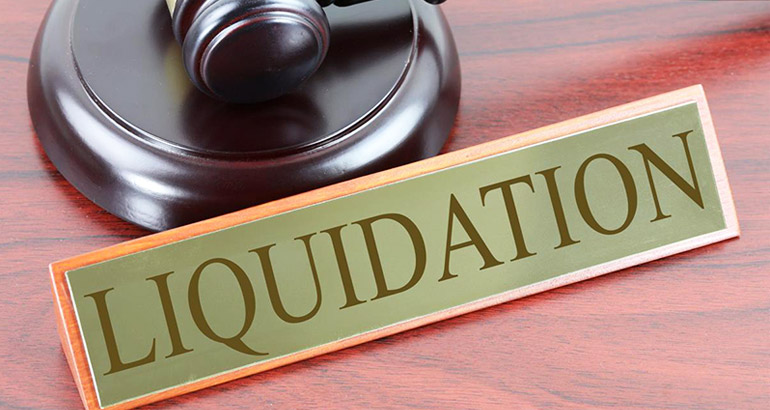Company Liquidation Things To Know Before You Get This
Company Liquidation Things To Know Before You Get This
Blog Article
Top Guidelines Of Company Liquidation
Table of ContentsThe Buzz on Company LiquidationUnknown Facts About Company LiquidationThe 5-Second Trick For Company LiquidationThe Basic Principles Of Company Liquidation Company Liquidation for Beginners
A liquidator is particularly assigned to oversee the winding up of a business's events in order for it to be shut down generally when the business is going bankrupt. The liquidator is an unbiased 3rd party that supervises the sale of firm assets in order to repay any kind of arrearages.Their function consists of, however is not restricted to: Impartial Overseer: A liquidator is entrusted with serving as an objective 3rd party to manage the whole company liquidation process. Develop Declaration of Matters: Liquidators need to produce an extensive statement of affairs record. This record is distributed to financial institutions, detailing the existing economic condition of the organization at the time of its liquidation.
After the liquidation of a firm, its presence is eliminated from Business House and it ceases to be a lawful entity. If supervisors browsed the procedure uncreative, there would be no penalties or individual obligation for firm debts expected. Now, with a fresh start, directors can check out brand-new organization chances, though professional consultation is recommended.
Company Liquidation Things To Know Before You Get This
As an example, if even more than 90% of all firm investors concur, liquidation can take place on brief notification within seven days, the minimal legal notice for creditors. Nonetheless, normally, the bigger the liquidation and the even more possessions and resources business has, the longer the process will certainly take. 'Do I need to pay to liquidate my business?', the response will certainly rely on whether or not your service has any properties leftover when selling off.

We recognize that no 2 business are the exact same, which is why we will put in the time to learn more about your service so we can suggest the very best course of activity for you. We just operate in your benefits, so you can be entirely positive in the solution we offer.
The 8-Minute Rule for Company Liquidation
In the UK, there is an established process to shutting down or restructuring a minimal firm, whether it is solvent or bankrupt. This process is referred to as liquidation and can just be handled by a qualified insolvency professional (IP) in accordance with the Insolvency Act 1986. There are 4 main sorts of firm liquidation procedure: Creditors' Volunteer Liquidation (CVL); Compulsory liquidation; Administration; and Members' Voluntary Liquidation (MVL).

In these situations, it is very important that the business discontinues trading; if the service remains to trade, the supervisors can be held personally responsible and it could cause the insolvency specialist reporting wrongful trading, known as misfeasance, which might result in lawsuit. The supervisors appoint a bankruptcy specialist and once this has been concurred and validated, there is a conference with the shareholders.
Obviously, if there are no shareholders, this action of the procedure is not needed (Company Liquidation). The IP takes control of the business and begins the company liquidation process. The supervisors are no more included in what takes place, including the sale of the firm's assets. If the supervisors want any of the properties, they can inform the IP.
All About Company Liquidation
The major distinction is that the firm's financial institutions used to the court for an ending up order which compels the bankrupt firm right into a liquidation process. In many cases, creditors take this action as a last hope since they haven't received payment through other forms of negotiation. The court appoints an insolvency specialist, also referred to as a main receiver, to perform the obligatory business liquidation process.
This kind of business liquidation is not volunteer and directors' click over here now conduct is reported to the UK's Secretary of State once the liquidation procedure has been finished. Any type of director that fails to work together with the IP or has actually been included in director misconduct, or a deceptive act, may result in serious consequences.
It is used as a method to protect the business from any lawful action by its financial institutions. The directors of the company concur to make routine settlements to resolve their financial debts over a period of time. The appointed manager handles the volunteer administration procedure, and gets the settlements which they then distribute to financial institutions according to the agreed amounts.
Some Known Details About Company Liquidation
This offers the company with time to establish a plan moving forward to rescue the firm and prevent liquidation. Nonetheless, at this moment, directors hand control of the company over to the designated administrator. If a business is solvent but the directors and investors desire to shut business, a Participants Volunteer Liquidation is the right choice.
The business liquidation process is handled by a liquidator designated by the directors and shareholders of the company and they should sign an affirmation that there are no financial institutions staying. The liquidation procedure for an MVL resembles that of a CVL because assets have a peek here are become aware but the earnings are dispersed to the supervisors and the investors of the firm after the liquidator's fees have been paid.
Report this page